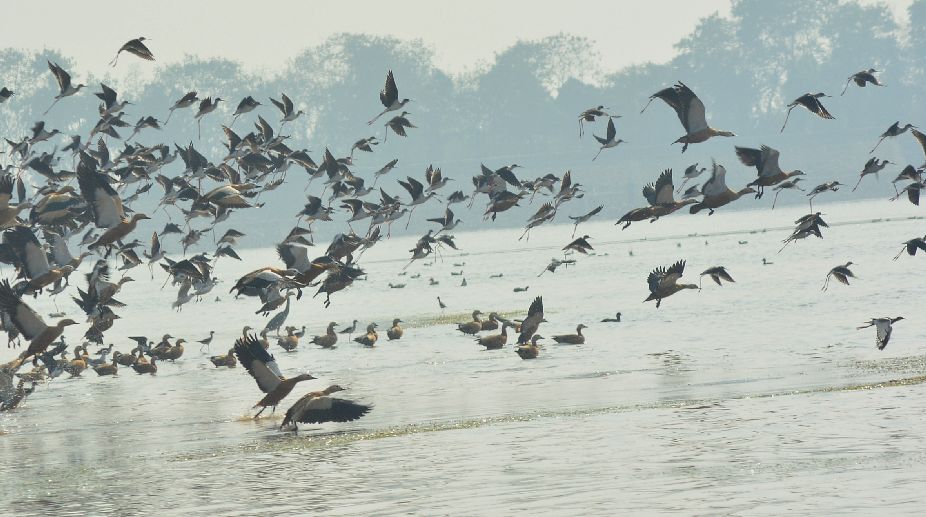Alipurduar lorry owners seek ‘cut money’ refund from cops
Members of the association held a demonstration in front of the Birpara police station.

Representational image (Photo: Pradeep Saini/ SNS)
In a world where everyone is talking about conservation of nature, it feels sad when one comes across the fact that human interference is posing a great threat to the avian habitat in the Dooars region of North Bengal.
Not many of us are aware that unscientific renovation, aforestation, rampant fishing, removal of water weeds and destruction of grassland are the major factors plaguing the avian population in wetlands. Debashis Das, associate professor of zoology, Toofangunj College, Cooch Behar said, “Avian species are environmentally-sensitive fauna and it is imperative to take up the best conservation practices in order to sustain the population. We had taken up extensive research on the birds of Cooch Behar in which 210 species along with the subspecies of avifauna have been recorded in the district.
We have sighted 88 different kinds of migratory winged visitors of which 39 are exclusively migratory and 49 are resident-migratory. We have recorded 71 species of water birds from the wetland areas of Cooch Behar and 122 species of residential birds have been identified.”
Advertisement
Das also pointed out that the forest spotted owlet has been recorded as critically endangered in Cooch Behar while there are three endangered avian species that include the lesser adjutant, Palla’s fishing eagle and lesser kestrel.
Besides, there are three near-threatened avian species like darters, grey-headed fishing eagle and white-eyed pochard. In today’s age, an increasing number of people are interested in capturing images of avian life. Das said, “Low-cost digitalisation and largescale implementation of multimedia are pulling crowds into the avian habitat.
The population of house sparrow, pied mynah and rose-ringed parakeet has risen in the Cooch Behar area. The renovation of Sagardighi has prevented the arrival of migratory birds over the last five years.
Sometimes the inappropriate removal of water hyacinth can cause a disturbance in the avian habitat as happened at Rasik Beel in Toofangunj. The change in the course of swift-flowing rivers can also remove a bulk of the avian population.”
Mass awareness is the need of the hour to sustain avian biodiversity. Das said, “There should be strict implementation of Indian Wildlife Acts without any loophole. The government needs to step up and increase forest patches like the Gajoldoba Wetland in Jalpaiguri and Mahananda Barrage in the vicinity of Siliguri.”
Das began his research journey back in 1995. Some of the other notable works of the zoologist include the changing scenario of bird richness in Central Bhutan. The latest published works of the zoologist is on the avian diversity of North Bengal around the river Torsa in the vicinity of Cooch Behar where 111 species of avifauna have been recorded of which 51 species are terrestrial, 27 are migratory, 24 are resident-migratory and 60 are only residential birds.
For the last 25 years the Bengal Florican has not been sighted in and around Cooch Behar owing to destruction of large grasslands that forms their breeding habitat.
“Apart from poaching, a rise in elephant population is another key factor that has disturbed the habitat of the avian species. We have not come across any species of quail or partridge in North Bengal owing to the degradation of habitat and illegal poaching,” said Das.
Advertisement